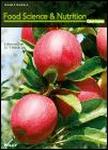版权所有:内蒙古大学图书馆 技术提供:维普资讯• 智图
内蒙古自治区呼和浩特市赛罕区大学西街235号 邮编: 010021

作者机构:Guangdong Acad Agr Sci Tea Res Inst Guangdong Key Lab Tea Plant Resources Innovat & U Guangzhou Guangdong Peoples R China Mississippi State Univ Dept Plant & Soil Sci Starkville MS USA
出 版 物:《FOOD SCIENCE & NUTRITION》 (食品科学与营养)
年 卷 期:2019年第7卷第9期
页 面:3017-3029页
核心收录:
学科分类:0832[工学-食品科学与工程(可授工学、农学学位)] 08[工学]
基 金:China Agriculture Research System [CARS-19] Natural Science Foundation of Guangdong Province [2014A030313567, 2017A030310097] Guangzhou Pearl River Science and Technology Nova Project Yingde Science and Technology Plan Project [JHXM2016015]
主 题:aroma nutrients Viscum articulatum Burm f
摘 要:Volatile flavor compounds (VFCs) and nutrients in Viscum articulatum Burm.f. parasitic on ancient tea trees (named TM) were studied in this research by headspace solid-phase microextraction (HS-SPME)/gas chromatography-mass spectrometry (GC-MS) and conventional methods. Sixty-six volatile compounds belonging to different classes were identified by GC-MS. The ketones, alcohols, and aldehydes were the principal aroma groups in TM according to principle component analysis (PCA). The most abundant aroma components in TM included benzaldehyde (9.64%), geranylacetone (7.92%), epoxy-beta-ionone (7.71%), beta-linalool (7.35%), methyl salicylate (6.96%), and hotrienol (6.14%), significantly higher than CKs (p .05). The positive PC1 and PC2 in TM were correlated with benzaldehyde, hotrienol, methyl salicylate, and geranylacetone. The mistletoes could be differentiated from CKs due to the difference in aroma compounds. Clean and fresh, woody and nutty odor with minor floral scent was the characteristics of TM. Analysis of the nutritional components showed that contents of polyphenols and catechins in TM were at trace levels, significantly lower than CKs (p .05). The total contents of polyphenols, amino acids, carbohydrates, and caffeine in TM were significantly lower from the total soluble solids (p .05), indicating that there were still lots of compounds undetected in TM. The sensory test showed that the taste and aroma in TM can be accepted, which indicates TM could be developed into alternative tea drinks in the future.